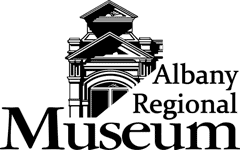By Cathy Ingalls, Albany Regional Museum board member
Early travelers going to and from Albany managed to get to their destinations, but it wasn’t always a quick or an easy trip.
However with the arrival of trains, ferries, bridges and paved roads, travel became safer and faster.
Let’s start with the portion of U.S. Highway 20 that runs from Albany to Corvallis.
Edward Loy, author of “Gem of the Willamette Valley, A History of Albany, Oregon” said, “I know stagecoaches followed the Albany-Corvallis route, that at least in part, roughly follows the present Highway 20.
“There are a few houses along 20 that would predate the improving and paving of the modern highway, so I would conclude that the new highway more or less overlays the old,” he added.
Ron Irish, the city’s transportation systems analyst, said, “I don’t recall seeing anything around the office that hints at pre-highway travel routes between Albany and Corvallis.”
So Irish wonders at what might have passed for a Willamette River crossing between Albany and North Albany before bridges were constructed.
“My money would be on a ferry, but I’ve never heard of any stories of a local ferry crossing,” he said.
Sternwheeler steams upstream near the steel bridge that crossed the Willamette from Calapooia St. Museum Collection #2007.015.587
Irish is right.
Starting in 1851, E.M Briggs operated a ferry that plied the Willamette from the foot of Ferry Street.
He charged 75 cents for a wagon and team; 20 cents for mules and packhorses; 12.5 cents for people on foot; 10 cents for loose cattle; 5 cents for sheep and hogs; and 5 cents for 100 pounds of freight.
One clue that early travelers made it into Albany is that the Jeremiah Driggs house at 516 Elm St. S.W. built in 1868 was a stage stop.
That makes sense to historian Bill Maddy because the first bridge across the Willamette lined up with Elm.
The steamer Multnomah was the first to make it up the Willamette to Orleans, located in Linn County across the river from Corvallis. The boat docked in Albany in 1851 at the foot of Broadalbin Street.
From 1850 to 1875 “the steamboat became as important to Linn County’s progress as the farm and freight trucks of today,” author Floyd C. Mullen noted in his book “The Land of Linn”.
The railroad arrived in 1871, leading to the demise of the riverboat.
Traveling to Albany and Corvallis via crossing the Willamette became a snap after November 1917 when the Oregon State Highway Commission developed terminal points for a paved highway between the two cities.
In 1925, the two-lane, Ellsworth Bridge was built, opening a year later. The 1,090-foot-long, steel-truss structure was designed by renowned designer Conde McCullough.
Postcard with photograph on front which shows a view of the Ellsworth Street bridge under construction circa 1925. Museum Collection #1987-012-0001.
What was then known as the Albany Bridge was constructed by the Union Bridge Co., based in Portland.
So what was a route very early travelers relied upon to go north or come south to Albany?
Loy believes that people and freight coming southbound from say Salem took a ferry at the city of Jefferson and then continued the journey into Albany on Old Salem Road.
Councilor Dick Olsen said he recalled Dick Reid saying that when he “was a kid, the family lived at his dad’s veterinary office at Ninth and Washington. He would hear the big, freight trucks come shifting down to make the corner and then shift back up to make the next corner at Elm Street.”
From there, somehow those on the road made it west to Corvallis.
Much later, between 1939-40 the construction of the Pacific Boulevard overpass finished the segment of the major roadway in Albany.
More information about Albany’s transportation systems can be found at the Albany Regional Museum, 136 Lyon St. S.
Ed Loy’s “Gem of the Willamette Valley” is for sale at the museum, which is open to the public from 11 a.m. to 4 p.m. Tuesday – Friday.
You can call 541-967-7122 or email info@armuseum.com with questions or for requests for assistance.


